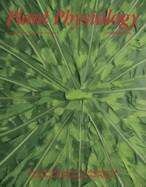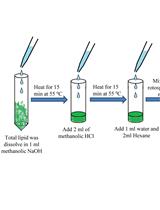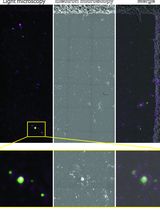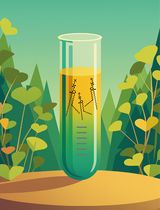- EN - English
- CN - 中文
Wax Analysis of Stem and Rosette Leaves in Arabidopsis thaliana
拟南芥茎和莲座叶的蜡质层分析
发布: 2013年06月05日第3卷第11期 DOI: 10.21769/BioProtoc.782 浏览次数: 15186
Abstract
The primary aerial surfaces of all land plants are coated by a lipidic cuticle, which restricts non-stomatal water loss and protects the plant from pathogens, herbivores, and ultraviolet radiation. The cuticle is made up of two components: cutin, a polymer of hydroxy- and epoxy- long-chain fatty acid derivatives and glycerol, and cuticular waxes, which are derivatives of very-long-chain fatty acids. While chemical analysis of cutin can be a lengthy and technically challenging task, analysis of cuticular waxes is relatively simple, and can be routinely used to characterize different plant species, adaptations of a given species to environmental conditions, or mutant phenotypes. Here, we present a protocol tailored for the analysis of cuticular waxes on the surface of the model organism Arabidopsis thaliana. Because cuticular waxes are found on the outermost surface of the plant, the wax extraction process is very simple, and sample processing can be completed in less than one day. Chemical analysis involves quantitation of wax monomers by gas chromatography coupled with flame ionization detection (GC/FID), and identification of wax monomers by either mass spectrometry or comparison of retention times of individual wax components to those of known standards.
Keywords: Arabidopsis (拟南芥)Materials and Reagents
- Chloroform, ACS grade (Sigma-Aldrich, catalog number: 319988-4L )
- N,O-bis(trimethylsilyl)trifluoroacetamide with trimethylchlorosilane (99:1 BSTFA+TMCS) (Sigma-Aldrich, catalog number: 33148 )
- Pyridine, ACS grade (Thermo Fisher Scientific, catalog number: P368-500 )
- Tetracosane (solid, for use as an internal standard) (Sigma-Aldrich, catalog number: 87089-1G )
Equipment
- Ruler or sticker of known dimensions
- Overhead transparent sheets (only needed for leaf wax analysis)
- Camera, ideally with a small tripod
- Scissors
- Forceps
- 11 ml glass tubes (Wheaton, catalog number: 358606 )
- 1.5 ml GC vials (Agilent, catalog number: 5182-0715 )
- 250 μl GC vial inserts (Agilent, catalog number: 5183-2085 )
- GC vial rack
- 100 μl glass syringe (Hamilton, catalog number: 80630 )
- 500 μl glass syringe (Hamilton, catalog number: 80865 )
- Oven
- Reacti-Vap evaporator (Thermo Fisher Scientific, catalog number: TS-18825 ) with Reacti-Therm heating module (Thermo Fisher Scientific, catalog number: TS-18822 )
- Nitrogen gas (Praxair NI M-T)
- Adobe Photoshop
- Microsoft Excel
- Gas chromatography system
- Agilent 7890A GC system with FID
- HP1 methyl siloxane column (Agilent, 19091Z-313 )
- hydrogen (GC carrier gas and FID fuel) and compressed air (for FID)
- Agilent 7890A GC system with FID
Procedure
文章信息
版权信息
© 2013 The Authors; exclusive licensee Bio-protocol LLC.
如何引用
Readers should cite both the Bio-protocol article and the original research article where this protocol was used:
- Haslam, T. M. and Kunst, L. (2013). Wax Analysis of Stem and Rosette Leaves in Arabidopsis thaliana. Bio-protocol 3(11): e782. DOI: 10.21769/BioProtoc.782.
- Haslam, T. M., Manas-Fernandez, A., Zhao, L. and Kunst, L. (2012). Arabidopsis ECERIFERUM2 is a component of the fatty acid elongation machinery required for fatty acid extension to exceptional lengths. Plant Physiol 160(3): 1164-1174.
分类
植物科学 > 植物生物化学 > 脂质
生物化学 > 脂质 > 胞外脂质
您对这篇实验方法有问题吗?
在此处发布您的问题,我们将邀请本文作者来回答。同时,我们会将您的问题发布到Bio-protocol Exchange,以便寻求社区成员的帮助。
Share
Bluesky
X
Copy link















